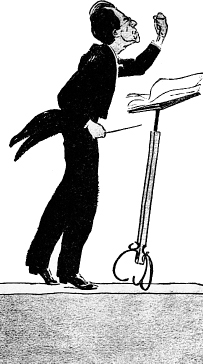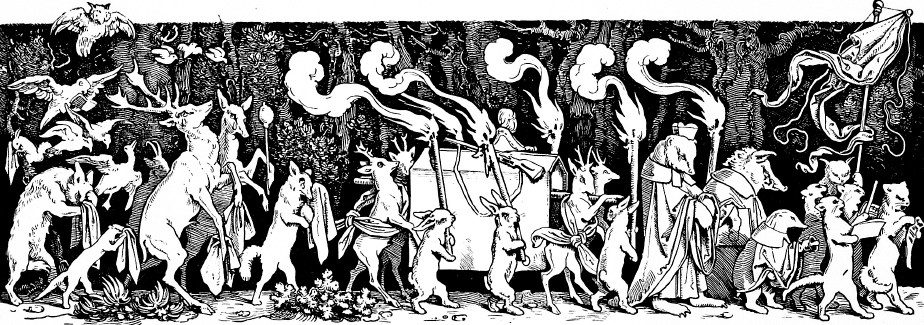Gustav Mahler, Symphony No. 1 (1888)

Mahler’s first symphony went through as complicated a process of genesis as any major work of music. It started out as a symphonic poem in one movement, grew to a five-
An important general feature of Mahler’s style is a special kind of counter-
Third Movement (Feierlich und gemessen, ohne zu schleppen — “With a solemn, measured gait; do not drag”) This ironic funeral march is also a personal lament, for its trio is taken from an earlier song by Mahler about lost love. (Though the musical form of the movement is quite original, it is based on march and trio form, analogous to the Classical minuet and trio.)
Section 1 Mahler had the extraordinary idea of making his parody funeral march out of the French round “Frère Jacques.” He distorts the familiar tune by playing it in the minor mode at a slow tempo:

The mournful, monotonous drumbeat that accompanies the march is derived from the ending of the tune. (Note that Mahler slightly changed the ending of “Frère Jacques” as he transformed it into his march — he wanted only so much monotony.)
The slow march itself is played first by a single muted double bass playing in its high register — a bizarre, deliberately clumsy sonority. An additional figure that Mahler appends to his version of “Frère Jacques,” played by the oboe, fits so naturally that we almost accept it as part of the traditional tune. The music dies out on the drumbeat figure (played by the harp), then on a single repeated note.
Section 2 This section is a study in frustration, as fragmentary dance-


This phrase, too, is cut short, and a varied repetition of the material introduced so far does not proceed much further. Instead, a long, grieving cadential passage is heard over the funeral-
Section 3 A note of consolation is sounded by this contrasting “trio,” which begins with warm major-
The rhythm is halted by quiet but dramatic gong strokes. Flutes play a few strangely momentous new phrases, also taken from the song.
Section 4 The final section combines elements from both sections 1 and 2. Soon after the “Frère Jacques” round commences, in a strange key, a new counterpoint joins it in the trumpets — another parodistic, almost whining sound:

One of the dance phrases from section 2 interrupts, picking up the tempo; and when “Frère Jacques” and the trumpet tune return, the tempo picks up even more for a wild moment of near chaos. But the mourning passage that ended section 2 returns, with its constant, somber drumbeat. The movement ends after another series of gong strokes.